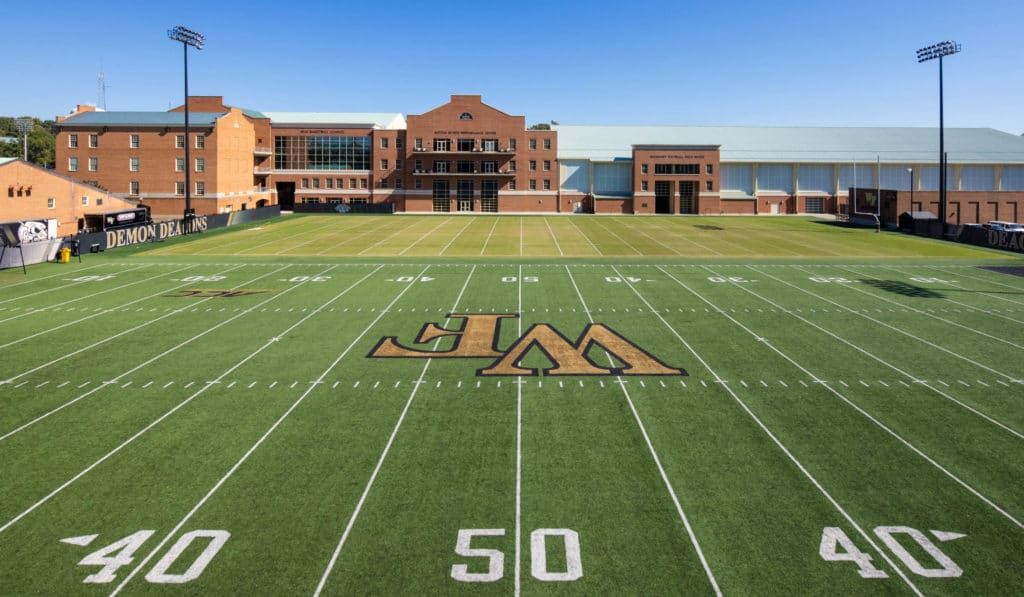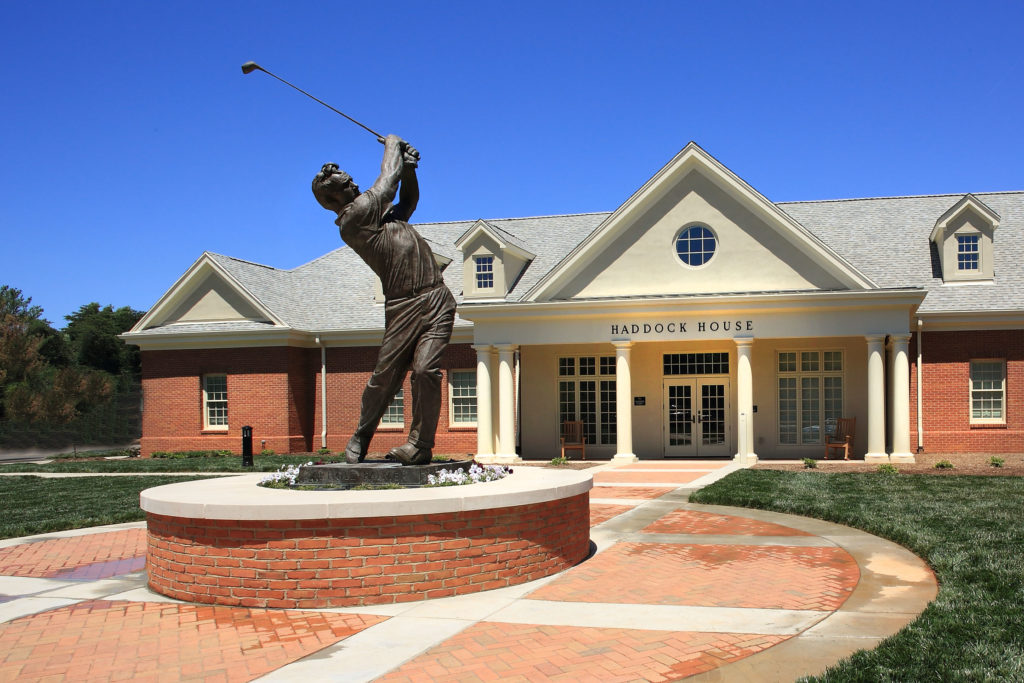The following is an excerpt from a recent Wake Forest University feature by Kim McGrath on the Sutton Sports Performance Center & Basketball Player Development Center at Wake Forest University.
Wake Forest soon will break ground on the Sutton Sports Performance Center and the Basketball Player Development Center thanks to the continued generosity of Ben Sutton (’80, JD ’83, P ’14, P ’16 and P ’19). The construction of these two buildings is a $50 million project — all of which has been pledged by athletic donors like Sutton.
Sutton’s most recent gift of $15 million has made it possible to build a state-of-the-art facility designed to improve the overall competitiveness of Demon Deacon student-athletes. One of Wake Forest’s most ardent benefactors, Sutton’s commitment to Wake Forest includes nearly $27 million in lifetime giving.
Preliminary site work on the facilities begins this month, and a ceremonial groundbreaking will be held in spring 2017.
The four-level, 87,000 square-foot Sutton Sports Performance Center will be connected to McCreary Field House on the Reynolda Campus and include:
More than 10,000 square feet of dedicated strength and conditioning facilities for football;
Strength and conditioning space for men’s and women’s soccer, track & field, men’s and women’s golf, field hockey and volleyball;
17,000 square feet of office and team space for men’s and women’s basketball including heritage areas and team meeting rooms (3rd floor);
18,000 square feet of office space for football staff to include heritage areas, team meeting rooms and other team spaces (4th floor);
Convenient access to sports science technology for evaluation and performance metrics;
More than 1,500 square feet of customized space for a nutrition area;
Enhanced sports medicine and training resources, including an expanded hydrotherapy area.
In addition to the Sutton Sports Performance Center, Wake Forest will also break ground on a 24,400 square-foot Basketball Player Development Center — a $12 million project that will enable the men’s and women’s basketball programs to avoid scheduling issues that have made sharing one facility challenging. Connecting the Sutton Sports Performance Center to the Miller Center, the Basketball Player Development Center will feature:
An additional regulation court with seven goals dedicated to the men’s basketball team;
6,000 square feet of dedicated strength and conditioning for men’s and women’s basketball; and
Easy access to basketball sports medicine facilities, including a cryotherapy chamber.
“Ever since Ben enrolled as an undergraduate 40 years ago, he has been a cheerleader for Wake Forest and the success of our athletic programs,” said Athletic Director Ron Wellman. “His vision and dedication for making a difference will have an incredible impact on the future of Wake Forest sports and our ability to prepare our student-athletes to compete for ACC and national championships. We are incredibly grateful for his foresight and commitment.”
The groundbreaking of the Sutton Sports Performance Center and Basketball Player Development Center comes as Wake Forest recently announced it has raised more than $625 million for students, faculty, and enhancements to the Reynolda Campus through Wake Will: The Campaign for Wake Forest. Having surpassed its initial fundraising goal of $600 million two years ahead of schedule, Wake Forest will build on support from alumni, parents and friends to extend the campaign to 2020 to raise $1 billion through Wake Will Lead.


